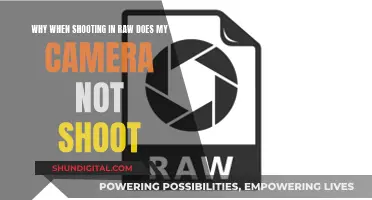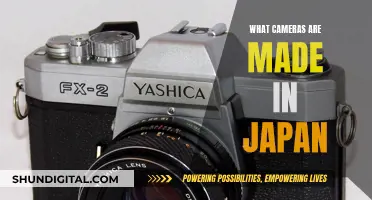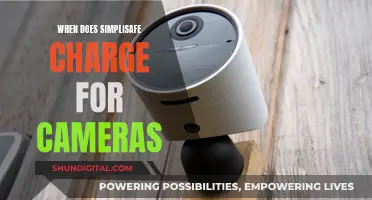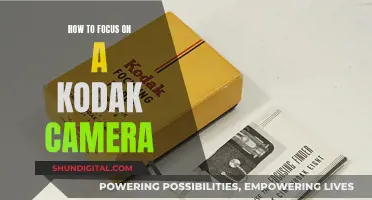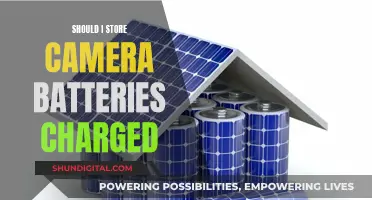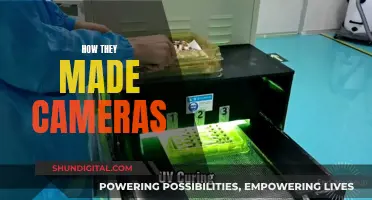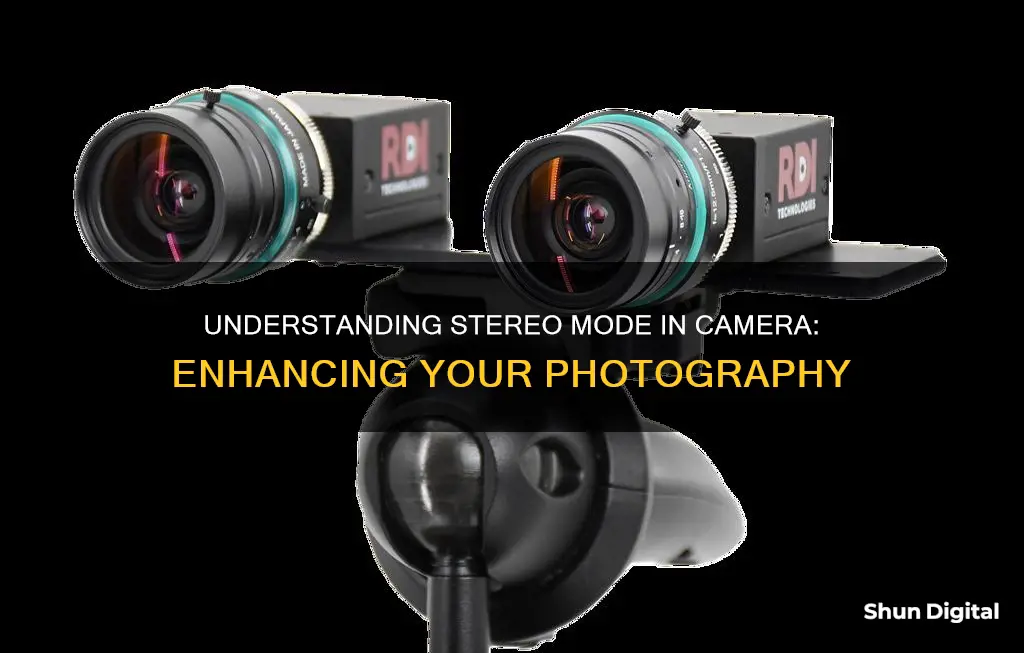
Stereo mode in cameras, also known as stereo photography, is a technique that involves capturing two images of the same scene from slightly different angles, mimicking how our left and right eyes perceive things. This method aims to replicate human binocular vision and create a three-dimensional effect when the images are viewed through a stereoscope, with one picture shown to each eye. Stereo cameras are equipped with two or more lenses and separate image sensors or film frames for each lens, allowing them to capture these multiple perspectives simultaneously.
| Characteristics | Values |
|---|---|
| Definition | Stereo photography, stereoscopic photography or stereo for short |
| Purpose | To mimic human three-dimensional vision |
| Technique | Two photographs of the same scene are taken from slightly different perspectives |
| Viewing method | When the pair of images is viewed through a stereo viewer (stereoscope), the left picture is shown to the left eye and the right picture to the right eye, creating an illusion of depth |
| Types of stereo cameras | Single camera with or without special attachments, paired cameras |
| Twin-lens reflex camera | |
| Notable stereo cameras | Jules Richard Verascope, Kodak Stereo Camera, Loreo 3D Lens in a Cap, Nimslo 3D, RBT, Stereo Realist, Stereocrafters Videon, View-Master Personal Stereo Camera, Fujifilm FinePix Real 3D W1, etc. |
| Use cases | Making stereoviews and 3D pictures for movies, range imaging, lane detection in cars, etc. |
| Distance between lenses | About the distance between one's eyes (intra-ocular distance), typically 6.35 cm, but a longer baseline produces more extreme 3-dimensionality |
| Alternative method | Taking two pictures with the same camera and moving it a few inches left or right, then editing the image to create a 3D effect |
What You'll Learn
- Stereo photography, or stereoscopy, is a technique that imitates human three-dimensional vision by taking two photographs of the same scene from slightly different perspectives
- Stereo cameras use two or more lenses with separate image sensors or film frames to capture three-dimensional images
- Stereo cameras are used for making stereoviews and 3D pictures for movies, as well as range imaging
- The distance between the lenses in a typical stereo camera is about 6.35 cm, similar to the distance between human eyes
- Stereo cameras can be used to calculate a depth map through advanced image processing techniques, which has applications in computer vision and spatial analysis

Stereo photography, or stereoscopy, is a technique that imitates human three-dimensional vision by taking two photographs of the same scene from slightly different perspectives
The technique was invented in 1851 by Scottish physicist Sir David Brewster and Parisian Jules Dubosq. It involves taking two photographs of the same scene, from slightly different angles, to mimic the way the left and right eyes see the world. When viewed through a stereoscope, with one image shown to the left eye and the other to the right, an illusion of depth is achieved.
There are several ways to achieve this effect. One way is to use a stereo camera, which has two or more lenses and separate image sensors or film frames for each lens. The distance between the lenses in a typical stereo camera is similar to the distance between human eyes, around 6.35 cm. However, a longer baseline between the lenses will result in more extreme three-dimensionality. Stereo cameras can be made by joining two or more cameras together, or by using a single camera with a special attachment. Alternatively, two photographs can be taken with the same camera, moving it a few inches between shots, and editing the images so that each eye sees a different picture, creating a 3D effect.
Stereo photography was very popular in the late 19th century and early 20th century, with several notable stereo cameras being produced during this time, such as the Kodak Stereo Camera and the Jules Richard Verascope. There was a resurgence in the 1950s with the Stereo Realist and similar cameras, and again in the 1980s with the Nimslo and Nashika cameras. In recent years, digital stereo cameras have been developed, such as the Fujifilm FinePix Real 3D series.
Stereo photography allows for the creation of three-dimensional images and has been used for making stereoviews, 3D pictures for movies, and range imaging. It is also used for artistic purposes, with notable stereo photographers including William Gruber, Christopher Schneberger, and Vladimir at vladmaster.com.
Best Action Cameras for Extended Recording Sessions
You may want to see also

Stereo cameras use two or more lenses with separate image sensors or film frames to capture three-dimensional images
Stereo cameras are used to capture three-dimensional images, simulating human binocular vision. They achieve this by using two or more lenses with separate image sensors or film frames for each lens. This allows the camera to capture two images of the same scene from slightly different perspectives, imitating the way the left and right eyes see. When viewed through a stereoscope, with the left picture shown to the left eye and the right picture to the right eye, an illusion of depth is achieved.
Stereo cameras come in various types, with the most common being those with two lenses. However, for lenticular printing or the use of an autostereoscopic monitor, three or more lenses are preferred to widen the angle of viewing. This is also an effective method for photographing objects in motion. Some stereo cameras are created by joining two or more cameras together, such as the RBT camera, which combines two high-end 35mm cameras into a single unit.
The distance between the lenses in a typical stereo camera, known as the intra-axial distance, is similar to the distance between human eyes (intra-ocular distance) at about 6.35 cm. However, a longer baseline, or greater distance between the cameras, will result in more extreme three-dimensionality. Stereo cameras with adjustable baselines, such as the Loreo 3D Macro lens, allow for greater flexibility in capturing three-dimensional images.
In addition to dedicated stereo cameras, it is possible to achieve a similar effect using a single camera. By taking two photographs of the same scene from slightly different positions, and then editing the images so that each eye sees a different picture, a three-dimensional effect can be created. This technique, however, presents challenges when dealing with moving objects in the scene.
Charging the Kidizoom Duo Camera: A Step-by-Step Guide
You may want to see also

Stereo cameras are used for making stereoviews and 3D pictures for movies, as well as range imaging
Stereo cameras are a type of camera with two or more lenses, each with its own image sensor or film frame. This setup allows the camera to mimic human binocular vision and capture three-dimensional images, a process known as stereo photography. The distance between the lenses in a typical stereo camera is similar to the distance between the human eyes, at about 6.35 cm. However, a larger distance between the lenses can result in more pronounced three-dimensionality.
Stereo photography techniques have been employed since the early days of photography in the 19th century, with the first stereoscopic image pairs appearing in the 1840s. The popularity of stereo cameras grew in the late 1940s with the introduction of compact European models like the Verascope F40, which used 35mm slide film. This was followed by the release of the Stereo Realist in 1947, which became the standard for "Realist format" cameras.
Stereo cameras can be used to create stereoviews and 3D images for movies. They are also utilised in range imaging, which involves producing a 2D image that displays the distance to various points in a scene from a specific viewpoint, often associated with a sensor device. One technique used in range imaging is stereo triangulation, where depth data is determined using multiple cameras to calculate the depth to points in the scene.
In recent years, digital stereo cameras have become more accessible, with options such as the Fuji W1 and Kandao QooCam EGO. These modern stereo cameras offer features like instant 3D viewing and compatibility with smartphones.
Charging Camera Batteries: International Travel Guide
You may want to see also

The distance between the lenses in a typical stereo camera is about 6.35 cm, similar to the distance between human eyes
The human eye has a unique ability to dynamically adjust its focus and compensate for varying levels of brightness within a scene. This results in a mental image that is seemingly free from distortion. To replicate this effect in photography, the stereo base can be adjusted to match the distance between human eyes, typically ranging from 54 to 74 mm, with the most common distances being between 64 to 69 mm. By using this configuration, photographers can create images that mimic the natural depth perception of human vision, making the final image more lifelike and three-dimensional.
The stereo base can also be modified to achieve specific photographic effects. For instance, a larger distance between the lenses, known as hyperstereo, can enhance the depth perception of distant objects, making them appear closer. On the other hand, reducing the distance between the lenses, known as macro stereo, is suitable for capturing extreme close-ups of small objects, ensuring that the image doesn't exhibit excessive parallax, which can make it challenging to view.
Additionally, the baseline, or the distance between the camera and the subject, is another critical factor in stereo photography. The 1:30 rule is often applied, where the baseline is equal to 1/30 of the distance to the nearest object in the photograph. This rule helps ensure that the image doesn't exhibit excessive parallax, which can be uncomfortable or even impossible to view.
In conclusion, the distance between the lenses in a stereo camera is an essential factor in achieving the desired photographic effect. By mimicking the distance between human eyes, photographers can create images with a natural sense of depth that closely resembles how we perceive the world. Deviating from this standard distance can also lead to unique and creative effects, showcasing the versatility of stereo photography.
Smoke Detector Camera Batteries: How Long Do They Really Last?
You may want to see also

Stereo cameras can be used to calculate a depth map through advanced image processing techniques, which has applications in computer vision and spatial analysis
Stereo photography techniques are used to produce stereoscopic images, videos, and films. This involves capturing two photographs from different horizontal positions to create a true stereoscopic image pair. This can be achieved using a variety of equipment configurations, including stereo cameras, single cameras with or without special attachments, or paired cameras.
Stereo cameras can be utilised to calculate a depth map, which has a range of applications in computer vision and spatial analysis. A depth map is an image or image channel that provides information about the distance of objects' surfaces from a specific viewpoint. This concept is closely related to depth buffer, Z-buffer, Z-buffering, and Z-depth, with the "Z" referring to the central axis of view of a camera, corresponding to its Z-axis.
Depth maps are valuable in several contexts, including:
- Simulating effects like fog, smoke, or large bodies of water
- Simulating shallow depths of field, often seen in macro photography
- Z-buffering and z-culling, which are techniques used to optimise the rendering of 3D scenes by identifying objects that are hidden and can be ignored for certain rendering purposes
- Shadow mapping, which is employed in creating shadows in 3D computer graphics
- Providing distance information necessary for generating autostereograms and other stereoscopy-related applications
- Subsurface scattering, used to simulate translucent materials like human skin
- In computer vision, depth maps enable the processing of 3D images using 2D image tools
- Creating depth image datasets
- In machine vision and computer vision, depth maps are used to model and reconstruct 3D shapes
Depth maps can be generated through advanced image processing techniques using stereo cameras. This involves capturing images from different viewpoints and then calculating the displacement of points between the images. This displacement information is utilised to estimate the distance of objects from the camera, resulting in a depth map that represents the distance between objects and the plane of the scene camera.
Adobe Camera Raw vs. Lightroom: Key Differences Explained
You may want to see also
Frequently asked questions
Stereo mode, also known as stereoscopic photography, is a technique that involves taking two photographs of the same scene from slightly different perspectives, imitating the way the left and right eyes see things. The aim is to mimic human three-dimensional vision and create a sense of depth when viewed through a stereoscope.
Stereo mode is typically achieved using a stereo camera designed or modified for this purpose. These cameras have two or more lenses to capture the left and right images simultaneously. However, other methods, such as using a single camera and moving it slightly between shots, can also be employed.
Stereo mode allows photographers to capture and present images with a sense of depth, creating a more immersive and three-dimensional experience for the viewer. It enhances the feeling of "being there" and provides a more realistic representation of the scene.
Some examples of stereo cameras include the FujiFilm Finepix Real 3D W3, GoPro Dual HERO 3D System, and Kandao QooCam EGO. Additionally, companies like Nikon, Pentax, and private brands have offered stereo adapters that can be used with regular lenses to achieve a similar effect.
Stereo mode has been used in various periods throughout history, with revivals in the 1950s and the 1980s. It is particularly useful for capturing landscapes, cityscapes, and still life scenes, as well as for creating lenticular prints and autostereoscopic monitors. Stereo mode can add depth to images that would otherwise appear flat, such as photos of distant objects or landscapes.


